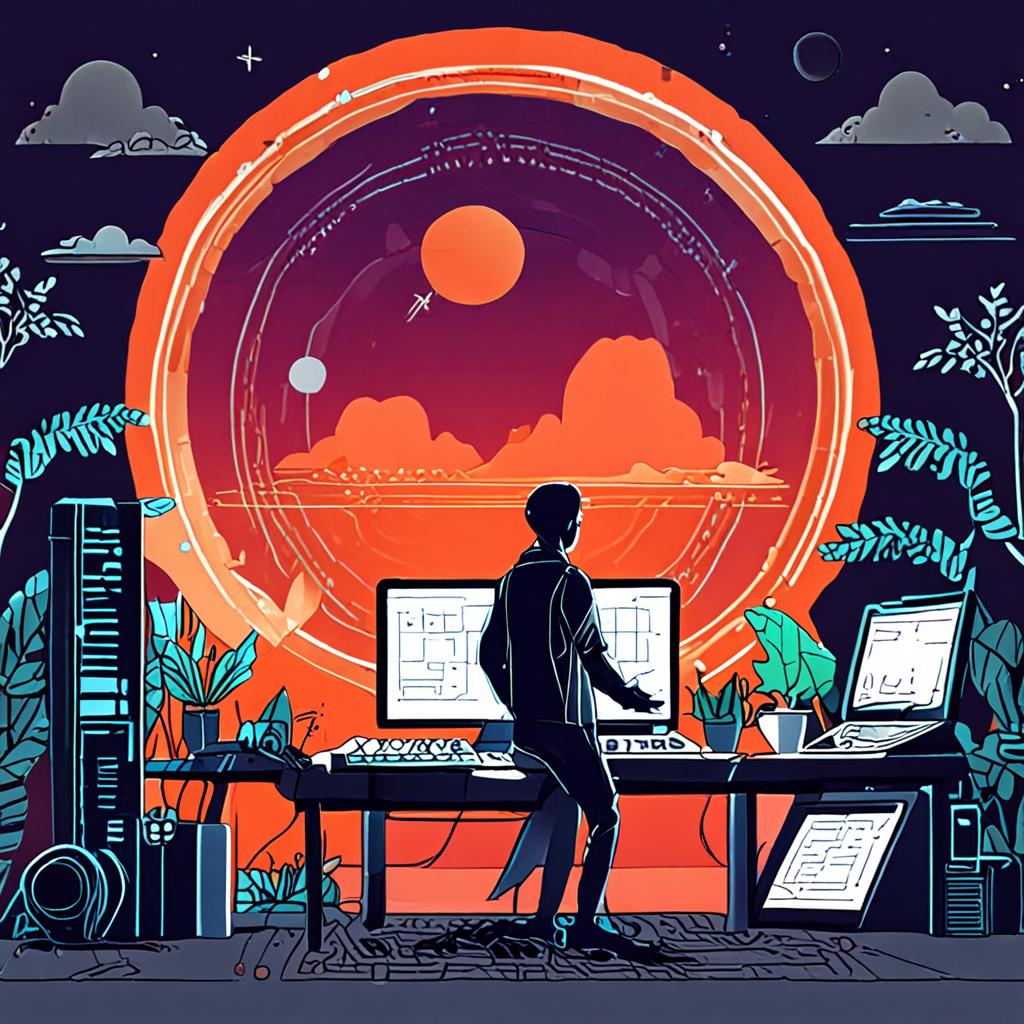Introduction
The digital age has brought unprecedented convenience and connectivity, but it has also led to a sense of overwhelm and distraction. Many professionals struggle with the constant stream of notifications, emails, and social media updates, leading to decreased productivity and increased stress levels. Digital minimalism, a movement that advocates for simplifying one’s online life, has gained popularity as a solution to this problem.
However, existing methods of achieving digital minimalism often fall short. For example, a study by the University of Texas found that individuals who attempted to implement digital detoxes often experienced a “rebound effect,” where they became even more engaged with technology after the detox period ended (Király et al., 2019). This suggests that simple abstinence from technology is not a sustainable solution.
Recent advances in AI have provided new tools and techniques for achieving digital minimalism. AI-powered website blockers, email filters, and social media analyzers can help individuals identify and eliminate digital distractions. By leveraging these tools, individuals can create a more streamlined and intentional online presence. But how effective are these tools in practice? In this article, we’ll examine 10 real-world benefits of digital minimalism and explore how AI can help individuals achieve a more balanced and productive online life.
The Digital Overload Paradox: How Excessive Online Engagement Affects Mental Health and Productivity
The Digital Overload Paradox refers to the phenomenon where excessive online engagement, intended to boost productivity and connectivity, ultimately leads to decreased productivity, increased stress, and compromised mental well-being. This paradox matters because it affects millions of people worldwide, including professionals who rely heavily on digital tools for work.
A real-world case in point is the finding that employees who check their work emails frequently outside work hours experience higher levels of stress, anxiety, and burnout (Katz, 2013). This constant digital connectedness can lead to a state of continuous partial attention, where individuals are never fully focused on one task, resulting in decreased productivity and creativity.
AI-driven tools can help mitigate this paradox by enabling digital minimalism. For instance, AI-powered website blockers, such as Freedom or SelfControl, can track and limit online distractions, while AI-driven email management tools, like Sanebox or Boomerang, can filter out non-essential emails and reduce digital noise. By leveraging these tools, individuals can regain control over their digital lives, reduce online overload, and improve their mental health and productivity.
Simplifying Your Digital Footprint: Strategies for Streamlining Online Presence and Reducing Distractions
A digital footprint refers to the trail of data and online presence left behind by an individual’s digital activities. Simplifying your digital footprint is crucial in the context of digital minimalism, as it helps reduce distractions, minimize online clutter, and promote a healthier online presence.
According to a study by the Pew Research Center, the average American spends around 11 hours per day interacting with digital media, resulting in a staggering amount of digital noise. By streamlining your online presence, you can reclaim time and mental energy spent on unnecessary digital activities.
AI-driven tools can help simplify your digital footprint by:
- Automating social media management and content scheduling
- Identifying and eliminating duplicate or redundant online accounts
- Providing personalized recommendations for digital decluttering and organization
For example, Marie Kondo’s digital decluttering approach, which involves eliminating digital items that do not spark joy, has been shown to reduce digital stress and increase productivity. By leveraging AI-driven tools and adopting a mindful approach to digital consumption, individuals can simplify their digital footprint, reduce distractions, and cultivate a healthier online presence.
Reclaiming Time and Attention: The Impact of Digital Minimalism on Focus, Creativity, and Work-Life Balance
In today’s digital age, distractions are abundant, and attention is a scarce resource. Digital minimalism offers a solution by helping individuals reclaim their time and attention, leading to improved focus, creativity, and work-life balance. By simplifying their online lives, individuals can reduce the constant stream of notifications, emails, and social media updates that fragment their attention.
A study by RescueTime found that the average person spends around 3 hours and 15 minutes on their phone every day, with a significant portion of that time spent on social media and email. By implementing digital minimalism, individuals can redirect this time towards more meaningful activities.
AI-powered tools can aid in this process by analyzing an individual’s digital habits and providing personalized recommendations for improvement. For example, apps like Freedom and SelfControl use AI to block distracting websites and apps during certain periods of the day, helping individuals stay focused on their goals. By leveraging AI-driven insights and tools, individuals can optimize their digital habits, leading to measurable improvements in productivity, creativity, and overall well-being.
Conclusion
The integration of Artificial Intelligence (AI) in digital minimalism has enabled individuals to optimize their online presence, streamline workflows, and prioritize well-being. By leveraging AI-driven tools and insights, professionals can now make data-informed decisions to minimize digital clutter, reduce screen time, and cultivate healthier online habits.
To harness the benefits of digital minimalism, consider the following practical next steps:
- Experiment with AI-powered productivity apps that help you track and manage your digital activities, identify areas of distraction, and set realistic goals for simplifying your online life.
- Adopt a ‘tech curfew’ by setting a daily time limit for your online activities, and use AI-driven tools to monitor and enforce this boundary, allowing you to recharge and focus on offline pursuits.
By embracing digital minimalism and leveraging AI-driven tools, professionals can reclaim their time, reduce stress, and cultivate a more balanced online-offline lifestyle. By taking these concrete steps, you can start to experience the transformative benefits of digital minimalism and unlock a more productive, happy, and fulfilling life.
